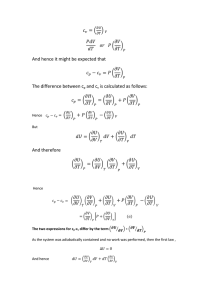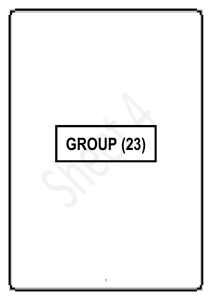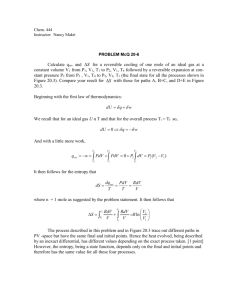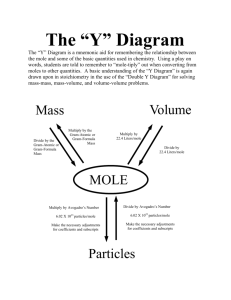phys-4420 thermodynamics & statistical mechanics spring 2006
advertisement
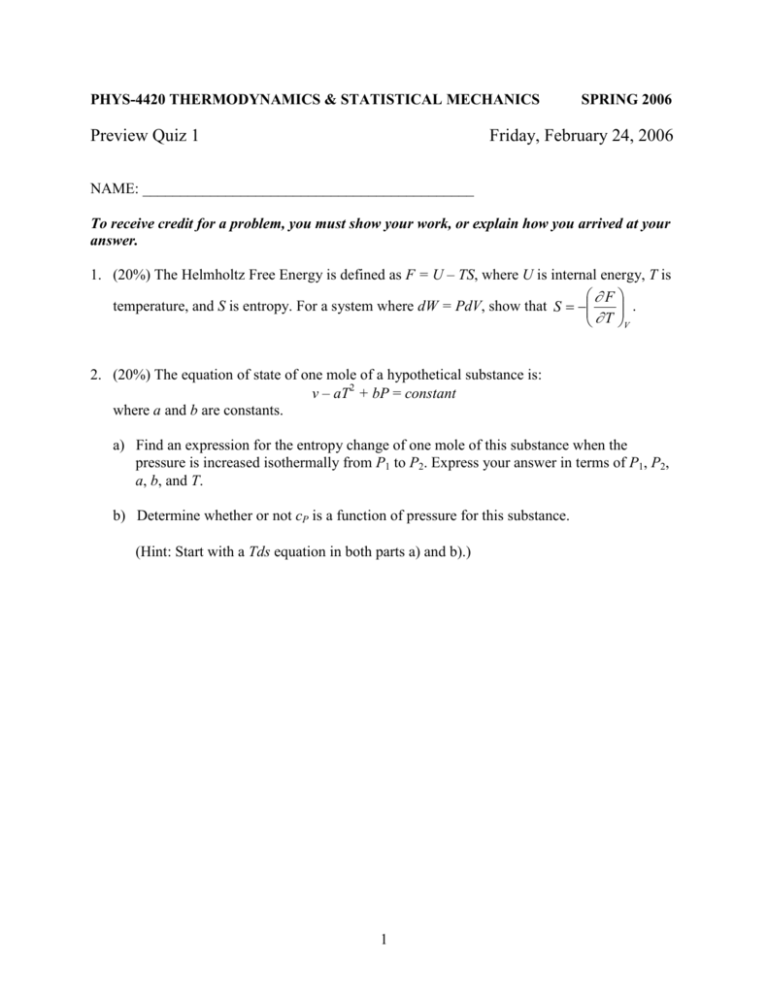
PHYS-4420 THERMODYNAMICS & STATISTICAL MECHANICS Preview Quiz 1 SPRING 2006 Friday, February 24, 2006 NAME: ____________________________________________ To receive credit for a problem, you must show your work, or explain how you arrived at your answer. 1. (20%) The Helmholtz Free Energy is defined as F = U – TS, where U is internal energy, T is F . temperature, and S is entropy. For a system where dW = PdV, show that S T V 2. (20%) The equation of state of one mole of a hypothetical substance is: v – aT2 + bP = constant where a and b are constants. a) Find an expression for the entropy change of one mole of this substance when the pressure is increased isothermally from P1 to P2. Express your answer in terms of P1, P2, a, b, and T. b) Determine whether or not cP is a function of pressure for this substance. (Hint: Start with a Tds equation in both parts a) and b).) 1 3. (40%) One mole of an ideal monatomic gas traverses the idealized Diesel cycle shown in the figure. Process 12 is adiabatic, and process 23 takes place at constant pressure. Process 34 is also adiabatic, and process 41 takes place at constant volume. (Hint: for one mole of an ideal monatomic gas, the internal energy is U 32 RT .) The temperatures of the gas at points 1, 2, 3, and 4 are: T1 = 300 K, T2 = 1600 K, T3 = 1800 K, T4 = 365 K a) (10%) Find V1/V2, the ratio of the volume of the gas at point 1 to the volume at point 2. (This is the compression ratio for the Diesel cycle.) V1/V2 = _____________ b) (10%) Find the magnitude of the heat added to the gas in the process 23. Express the answer in terms of the gas constant R. Q1 = _____________ c) (5%) Find the magnitude of the work done by the gas in the process 23. Express the answer in terms of the gas constant R. W23 = _____________ d) (5%) Find the magnitude of the heat removed from gas in the process 41. Express the answer in terms of the gas constant R. Q2 = _____________ e) (5%) How much work is done by the gas in one complete cycle? Express the answer in terms of the gas constant R. W = _____________ f) (5%) Find the efficiency of a heat engine operating with this cycle. = _____________ 2 4. (20%) In winter, around Troy, a layer of ice usually forms on the surface of a pond or lake, but the water remains liquid below this layer. One possible explanation for this phenomenon is based on the variation of pressure with depth in the water. Deeper in the water, the pressure is greater, so the freezing point is lower. Do you think that this is the entire explanation? Support your answer by calculating the thickness of the ice layer that would form on a lake at a uniform temperature of – 1.0ºC, if this explanation is correct. Useful information: v = 1.09 ×10-3 m3/kg v = 1.00 ×10-3 m3/kg 12 =3.34 ×105 J/kg 3



